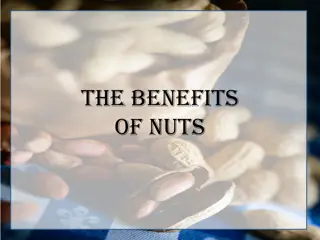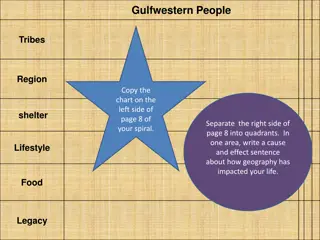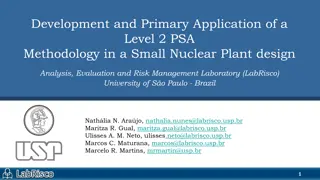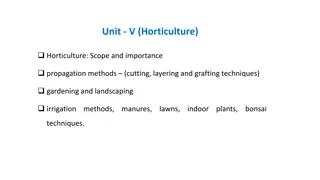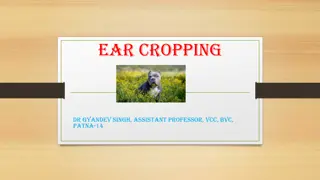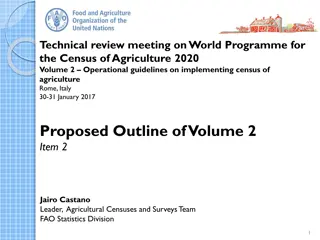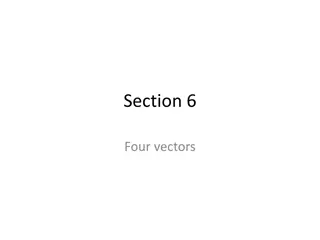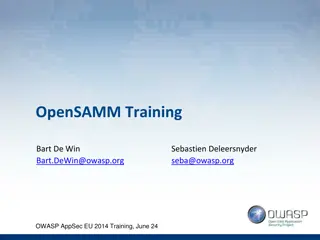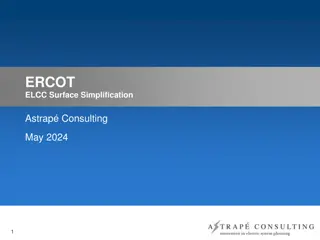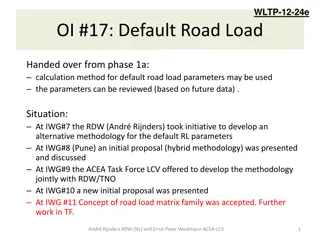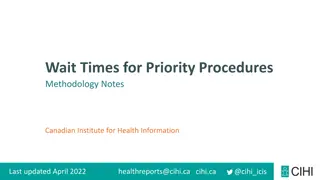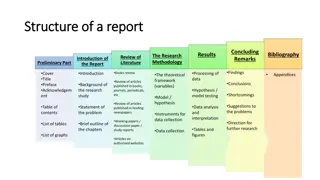Four Flap Grafting Methodology for Pecans: A Comprehensive Guide
Explore the history, importance, and methodology of four-flap grafting for pecan trees, along with insights on root stocks and the benefits of grafting for ensuring desired germplasm. Discover the best practices to successfully graft pecans and improve the quality of native pecan varieties.
Download Presentation

Please find below an Image/Link to download the presentation.
The content on the website is provided AS IS for your information and personal use only. It may not be sold, licensed, or shared on other websites without obtaining consent from the author. Download presentation by click this link. If you encounter any issues during the download, it is possible that the publisher has removed the file from their server.
E N D
Presentation Transcript
Four Flap Grafting Methodology Pecans (Carya illinoinensis) H. Randall Smith; Ph.D. Alcorn Extension Program State Horticulture Specialist and Agriculture Program Leader
Four Flap Grafting Methodology (History of pecans) The history of pecans can be traced to the early explorers and early Indian tribes. Is native to Southern river valleys of AL, GA, MS, LA, OK, TX, NM,AZ and others. Many varieties named for Indian tribes (Choctaws, Apache, Mohawks and etc.). Planted the nuts at camp sites and returned to them in their season (biennial producers) Used all parts of the pecan for nutrition and festival drinks. George Washington planted them at Mt. Vernon and still exist. Oldest orchard in world planted in 1890 is Moss orchard in Raymond, MS and still bears pecans.
Four Flap Grafting Methodology (Why Graft) Why graft? It guarantees a known and desired often improved germplasm. The scion or graft wood is placed onto a desired root-stock usually the same species however, there are times we place them onto different species. For example pecan grafted onto hickory (hickan). Other advantages of grafting is that there are many native pecan trees growing along fence rows, in pastures or abandoned lots across the pecan belt and it provides an opportunity to improve the quality of the native pecan, know what you have and improve marketability. Remember, the native pecan or seedling does is not consistent in size or quality. Apecan nut planted of a known variety will not return to the original variety due to lack of genetic homeostasis. This is why we graft pecans.
Four Flap Grafting Methodology There are many methods of grafting pecan trees (i.e.; cleft graft, in-lay bark graft, ring budding and many other methods of propagation). However, the easiest method is the four-flap or banana grafting method. This method increases the chances of better cambial (region of active cell division producing callus formation) contact compared to the other methods. Generally a two year old tree can be grafted successfully. Size of trunk can be 3/8 to 1.0 in diameter. It is desirable for the scion an root stock be of same size but can work if scion is 25% smaller or larger in size.
Four Flap Grafting Methodology (Root Stocks) Best way to get started plant a nut of an acceptable pecan variety. This variety will not come back true from seed but still carries some desirable traits that can be passed along to the newly grafted scion. In essence genetic information is passed from the root stock parent to the new grafted germplasm and vice- versa. However, the newly grafted germplasm will dictate nut type and quality based on the variety scion wood was taken.
Four Flap Grafting Methodology (Scion Collection) Most grafting failures come from purchasing scions that were poorly prepared or cared for or not following the appropriate measures at home. Scions are often collected from known varieties during the dormancy stages before bud break. This is generally mid-January through early- March. Do not collect wood from 2 to 3 year old tissues. Collect scions from disease free trees. Cut scions in 6 to 8 segments. Bundle 25 pieces together.
Four Flap Grafting Methodology Treat ends with paraffin wax to prevent drying. Not used today. Tag and wrap in wet newspaper and place into plastic bag. Store in a refrigerator with temperature set about 33 degrees Fahrenheit. Never store in a freezer or allow scions to freeze. Be sure to label your scions. Collect scions from young trees that are actively growing. When grafting keep scions in cooler away from sun and drying elements.
Four Flap Grafting Methodology (Grafting) Begin grafting when bark begins to slip and sap is moving (Mid-April to Mid-June). Cut sock plant straight across at designated place where want scion to be placed. Place rubber band over cut area and move down below about four inches. Make length-wise cuts on four sides through bark to wood to a length of 2.0 to 3.0 . pruners. Peel flaps back making sure not to touch inner area. Pull up rubber band to prevent excessive drying. Take scion, cut to length of 6.0 and make four shallow, longitudal cuts through bark to wood. Basically making a square. Make sure there are 2 to 3 buds present. Remove wood using sharp
Four Flap Grafting Methodology (Grafting) Pull rubber band up to below cut. Insert scion aligning cuts to inside of flap. Make sure leaf scar and buds are pointed upward. Pull rubber band up to stabilize scion inside of flaps. Begin wrapping slightly below cut at bottom and work upward using grafting or surveyor s tape. Make sure that the wrap is tight and move rubber band up. Place aluminum foil (shiny side out) around wrap. Once complete pinch hole in plastic bag and place over scion (use a quart or pint freezer bag). Pull bag down over scion to 1.0 above top of aluminum foil and about 2.0 below. Tape both ends.
Four Flap Grafting Methodology (After Care) Manage lateral branches below graft and this can be used to throttle the growth of scion and increase girth and reduce excessive terminal growth. Bag and foil should remain rest of year and remove in winter or August or September unless ants become a problem. Cut tape after scion growth begins to prevent girdling.
Four Flap Grafting Methodology (After Care) How does lateral growth control terminal growth? Increases the hormone cytokinin. This increase lateral branching and basal girth. Closer to terminal the more lateral branching. When cut terminal reduce Auxin and increase Cytokinin. Reduces hormoneAuxin and GibberellicAcid. Auxin controls apical dominance (growth upward). Giberellic Acid increases internode (region between nodes) elongation.
Four Flap Grafting Methodology (Questions???)



